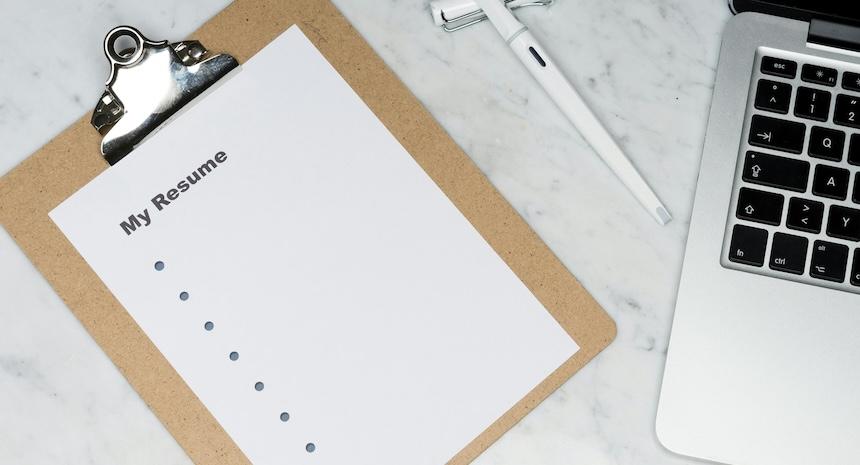Table of contents
Writing a thank you letter after an interview or after receiving a job offer is an easy way to stand out from the competition and keep your interview fresh in your potential employer’s mind. Similarly, writing a thank you letter for a job offer is a great way to show initiative and demonstrate to an employer that you appreciate the opportunity and you’re serious about following up on the opportunity.
Despite how simple it is to write a thank you letter, it’s a step many job seekers skip. Your thank you letter might not be as important as your resume, but after all the effort you put into preparing for the interview, writing a quick thank you note is a smart and easy investment that helps strengthen your chances of receiving an offer.
The contents of every letter you write will be slightly different depending on the role, the interview and your personal circumstances. Whether you want to reiterate some talking points and questions from the interview, or you simply want to politely say thanks and remind the employer of your interest, our guide will help get you off to a good start. Here, we show you how to write a thank you letter after an interview or for a job offer, including:
- Interview thank you letter samples for four different types of letters.
- A thank you letter sample to send if you forgot to send one right away (Whoops!).
- Three thank you letter examples for job offers.
- Tips for when and how to send a thank you letter to an employer.
- What to do if you forgot to send a thank you note after your job interview.
Thank you letters to send after an interview: 4 examples
Sending a thank you letter after a job interview is not only customary but it also shows a potential employer that you value the time they took to get to know you and that you’re excited about the role. Depending on the role you seek and your industry, your letter might be formal or casual, long or short. After interviewing for a hair stylist role, you might write a personable and friendly letter to match your unique cover letter and resume, whereas a paralegal thank you letter and resume will both be much more reserved. The exact format of your thank you letter matters less than the fact that you took the time to write one — as long as it’s appropriately professional. Here are four examples of how to write a thank you letter after an interview:
Informal interview thank you letter example
Hello [interviewer’s name],
Thanks for taking the time to meet with me earlier today. I really appreciated the opportunity to learn more about the [job title] role at [company name]. It was great to have the chance to learn more about the company culture and to meet the team.
I’d like to say again that I am very interested in the position. I left our conversation excited about the opportunity and confident that my skills and experience would be a great fit for the position.
Again, thank you for your time today. I look forward to hearing from you soon.
All my best,
[Your Name]
Formal interview thank you letter sample
Hello [interviewer’s name],
I would like to express my gratitude for the opportunity to interview for the [job title] role at [company name] yesterday. It was such a pleasure to meet you in person and have the chance to get to know the rest of the team. The opportunity to learn more about the company and the position was invaluable.
I was particularly interested in our discussion of the company’s values and goals, and your expectations as to how a person in the [job title] role might contribute to those. After our review of my experience and qualifications, I am more convinced than ever that I am the right person for the job. Specifically, I think my skill set, including [skill], [skill] and [skill], would benefit the company tremendously.
Again, thank you for your time and consideration. Please do not hesitate to contact me if you have any questions or require any further information about my background. I look forward to hearing back from you regarding the next steps in the process.
All my best,
[Your Name]
Simple interview thank you letter example
Hello [interviewer’s name],
I just wanted to take a moment to thank you for the opportunity to interview for the [job title] role at [company name]. I appreciated the opportunity to meet with you and to learn more about the company and the position.
I appreciated the time and effort that you took to discuss my qualifications and to answer my questions about the company and the role. Your observations were insightful and I feel more excited about the role than I did before our conversation.
Once again, thank you for considering me for the [job title] role. I look forward to hearing back from you regarding the next steps in the process.
All my best,
[Your Name]
Detailed interview thank you letter sample
Hello [interviewer’s name],
I am writing to express my thanks for the opportunity to interview for the [job title] role at [company name]. It was an honor to meet with you and the rest of the team. I walked away with much deeper insights into the company, its goals and how the [job title] role can assist in meeting them.
I was impressed by the thoughtful questions the team prepared for our discussions and the level of detail you were able to provide about the company and the position itself. Your insightful questions and comments about my background showed that you had carefully considered my candidacy and were genuinely interested in my skills and experience.
I would like to express again my enthusiasm for the role and my desire to contribute to the team. It would be an honor to collaborate with you and the team to achieve a shared objective. Our discussion convinced me that my [skills discussed in interview] skills and my experience with [insert experience] can help the company reach its goal of [insert goal here].
Thank you once again for your time. I am available if you have any additional questions about my background as you make your decision. I look forward to hearing from you soon regarding next steps.
All my best,
[Your Name]
How late is too late to send a thank you for an interview?
Your interview went well. Now you’re patiently waiting to hear back from the employer when it hits you — you forgot to send a thank you note right after the interview!
Fear not. You haven’t blown your chances of landing the job. Plenty of candidate’s don’t send out thank you letters, though we really recommend taking the time to write one even if you keep it brief. To do everything you can to show the interviewer that you’re serious about the role, you should go ahead and start writing your thank you letter now, even if it’s a bit late.
While it’s ideal to send a thank you note or email within 24 hours of the interview, sometimes that’s not possible. All is not lost if you have to wait a day or two, especially if your interview was on a Friday or right before a holiday. If you miss the 24-hour window, be sure to send your thank you letter within a week. This ensures that your interview is still fresh in your interviewer’s mind when they receive your letter. After a week, a thank you letter is not likely to have as big of an impact.
Below, we’ve included a belated thank you letter sample to help you write your own quickly to save the day.
Late interview thank you letter
Hello [interviewer’s name],
To start, I want to apologize for my tardiness in getting this note in the mail to you. My interview schedule has been quite packed!
However, the oversight in no way reflects my interest in the role. Our discussion during my interview convinced me that my [skills discussed in interview] and my experience with [insert experience] can help the company reach its goal of [insert goal here].
I truly appreciate the time you took to speak with me and for having the opportunity to interview for the [job title] opening at [company name]. If I can answer any questions or provide you with any additional information, please let me know.
All my best,
[Your Name]
Thank you letters for a job offer: 3 examples
Once you have been offered a position, the polite thing to do is to write a thank you letter for the job offer. Even if you don’t plan to accept the offer, or if you need to negotiate a part of the offer, writing a thank you letter shows respect for the employer. And remember, writing a letter doesn’t have to take long. Even a short thank you email for a job offer will start you off on the right foot with a new employer.
Here are three thank you letter samples to consider:
Thank you letter for a job offer you plan to accept
Dear [Hiring Manager’s Name],
I am writing to express my gratitude for the offer of the [job title] position at [company]. I am extremely excited to accept the position and to join the team.
I appreciate the time you have taken to interview me and understand my background and credentials. It’s been a pleasure getting to know you and other team members.
Thank you again for the opportunity to join [company name]. Please let me know if there is any additional information or documentation that you require. If not, I will see you on [start date].
Sincerely,
[Your Name]
Thank you letter for a job offer you plan to turn down
Dear [Hiring Manager’s Name],
I would like to thank you and the team at [company] for extending the offer for the [job title] position. It was an honor to receive the offer and it has been a pleasure to learn more about the company and the position.
However, after careful consideration, I have decided to decline the offer. While I was impressed by the talented and dedicated team and the company as a whole, I have decided to pursue other opportunities that are better aligned with my skills and career aspirations.
I sincerely appreciate the time and effort that you and the team took during the interview process. The role is a great opportunity and I have no doubt that [company] will be able to fill it with someone who can help the company achieve its goals.
I wish you and the team all the best in your future endeavors.
Respectfully,
[Your Name]
Thank you letter for a job offer you want to negotiate
Dear [Hiring Manager’s Name],
I was thrilled to receive the offer of the [job title] role at [company]. I am excited about the opportunity to join your team, and I am confident that I will make a valuable contribution to the company.
However, before I formally accept the position, I would like to discuss the possibility of negotiating the terms of the offer. While I am pleased with the overall package, I would like to propose a few changes that would better align with my experience and goals.
Specifically, I would like to discuss the possibility of increasing the salary by [dollar amount]. According to my research, this increase is in line with the current market rate for [job title]s in [city]. I believe this competitive rate is fair and aligns with my years of experience.
I would appreciate the opportunity to discuss these proposals with you. Thank you again for your time and consideration, and I look forward to hearing back from you regarding next steps.
All my best,
[Your Name]
Can I send a thank you email for a job offer?
Yes. While many people prefer to send a handwritten thank you letter, in today’s digital landscape it is acceptable, and very common, to write a thank you email when you receive a job offer. Structure it the same way you would a handwritten note, personalizing each email to the individual who interviewed you.
If you don’t already have the email address of the person or persons who interviewed you, ask the recruiter. If the recruiter isn’t able or willing to share email addresses, write individual letters to each person who you spoke to during the interview, save them as PDFs and email them to the recruiter to distribute on your behalf.
Remember, it’s the thought that counts. So, whether you handwrite a thank you letter or send a thank you email after a job offer it will be appreciated.
4 common questions about sending a thank you letter
The rule of thumb is to get a thank you note in the mail or send it via email within 24 hours after your job interview. Before your interview, you can write a draft of the thank you letter and then add details to it after the interview ends to personalize it. Don't panic if your letter isn't ready in a day. A thank you is still worth sending even if it's a bit later.
Whether you are writing a job interview thank you letter or a thank you for a job offer, always mention the job title in the subject line of the email. This will let the employer know instantly your reason for writing. For example, you could write, “Thank you for interviewing me for the retail associate position.”
If you met with more than one person during the interview process, each person who interviewed you should receive a personalized thank you letter. This is also true if the interview process included a panel interview, which is where one applicant is interviewed by multiple people at the same time. For a panel interview, you should write a single outline of a thank you note and customize it for each person on the panel using details from the interview.
When writing a thank you letter after an interview or after you’ve received a job offer, never write overly personal information. This includes information about your career goals. An employer is most concerned with how you can help the company reach its goals, not how the company can help you reach your goals. And when writing a thank you letter after an interview, never mention salary, vacation time or other details in the letter. Those should be addressed when and if you receive a job offer.
Was this information about Thank You Letter After An Interview: Samples & Templates helpful? Let us know!
Heather is the Content Strategy Manager for Resume Now and a Certified Professional Resume Writer (CPRW) with more than ten years of experience writing about job search and career topics. She is based in San Francisco.
More resources

What Is an Elevator Pitch for an Interview? + Examples
Knowing what an elevator pitch is and how to use one in a job ...

Bullet Points on Resume: Examples & Guide for 2025
Learn how to use bullet points on a resume to highlight key sk...

10 High-Paying Side Jobs You Can Do From Home
Get yourself a job you can do on the side and earn a little ex...

Banker Resume: Examples, Templates & Tips
Make a banker resume that gets interviews in 2025. Use our wri...

Professional Staff Accountant Cover Letter Sample & Writing Guide
Using a professional staff accountant cover letter sample like...

